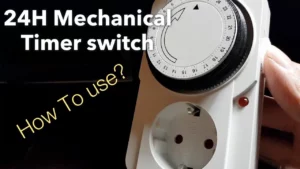At first glance, wall-mounted enclosures may seem unnecessary, but the truth is that they are vital in protecting residential electronics, telecommunications, and IT systems.
When working space is limited, you need to use the small space as efficiently as possible. Wall-mounted enclosures are electrical cabinets used to store potentially dangerous items, such as electrical equipment, such as electrical switchgear and pilot devices, and to protect them from environmental hazards such as humidity and dust.
Due to the development of technology, innovative wall-mounted enclosures are becoming more and more important. By choosing the right type of wall box, you can not only save space, but also save operating costs and equipment dollars.
1. What is a wall-mounted enclosure
Due to their basic protection and safety responsibilities, wall boxes (referred to as wall boxes) are usually designed to be sturdy to provide robust enclosure protection for various electrical switchgear and control equipment components. It is ideal for commercial and light industrial institutions with different electrical systems. The product is suitable for indoor and outdoor use.
Most wall boxes are made of plastic, metal, stainless steel or PVC, and usually have one or two doors. If they have a transparent door, the box may have a panel to display the content. On the contrary, some are designed to be completely solid to increase strength and resistance to tampering. The choice of material for the wall-mounted enclosure depends on the overall operating environment.
Metal wall mount enclosure
Wall-mounted enclosures made of metal are the first choice for wall-mounted hardware and components. Various types of steel such as sheet and carbon steel are often used. Door panels are usually made of aluminum, which is easy to use and reduce weight.
Stainless steel wall mount enclosure
It is ideal to use stainless steel electrical enclosures under extreme environmental conditions.
Plastic wall mount enclosure
This type is lighter but stronger, especially when made of ABS, thermoplastic, or polycarbonate. They are also suitable for indoor and outdoor use.
The electrical enclosure must meet safety requirements. The two main agencies responsible for the development and implementation of U.S. standards are:
- NEMA (National Electrical Manufacturers Association): Defines North American electrical enclosure standards. The NEMA rating shows the specific environment or hazard that the wall-mounted enclosure can handle. Due to the NEMA rating, wall mount enclosures are easy to choose.
- Ul (Underwriters Laboratories)-the world’s latest product and technology safety certification company
2. What is their purpose?
The wall-mounted enclosure is a reasonably sturdy and safe structure, which means storing and protecting sensitive components.
One of the main advantages of wall-mounted enclosures is that if you do not have enough space to place floor-standing enclosures, or move cabinets to wall-mounted enclosures, it is considered to provide better security and privacy. Wall-mounted enclosures can help you save space.
In some cases, specialized wall-mounted enclosure types are required, and more general wall-mounted enclosure types provide a wider range of potential uses. The latter usually has a simpler but versatile structure that provides a wider range of practical applications.
Wall-mounted enclosures have many practical applications, from home to industry, but they are mainly used in indoor and outdoor electrical systems. Wall mounting box is suitable for:
- Enclosure and protection of different electrical switches and terminal compartments
- Rack mount computer components
- Telecom and Network Center
- Install industrial power and control systems
- Weatherproof and protective safety equipment
- Prevent water splashes in swimming pools and saunas
- Protect other sensitive electrical or hardware devices from moisture, dirt and other environmental hazards.
3. Types of wall-mounted enclosures
Nowadays, customers generally require the following types of wall-mounted enclosures:
- Weatherproof electrical enclosure
- Ventilated wall-mounted enclosure
- IP grade electrical enclosure
- Metal wall-mounted enclosure
- Wall box with two doors
- Wall box with transparent door
- Stainless steel wall box
- Carbon electric wall box
Fiberglass wall box
These multifunctional and efficient wall boxes have many different uses to meet different installation needs, whether it is residential or commercial.
Below are the most common types of wall-mounted enclosures that you can often find sold from vendors. The following guide outlines the advantages and disadvantages of each.
Weatherproof wall box
The enclosure can house electronic components such as switches and circuit boards. Indoor and outdoor use is possible with this product. The IP rating or ingress protection rating indicates the ability of an item to block the entry of foreign objects. It is best to confirm the IP rating of the wall box you are buying to ensure that it is suitable for the installation location.
Ventilated wall-mounted enclosure
These enclosures have vents on the sides or door panels or groove cuts to help heat management of internal equipment and components. This is especially necessary for components that generate heat, such as transformers, CPUs, power supplies, and battery backup systems. To ensure that you get the proper cooling requirements, you should first consult the manufacturer or supplier. When choosing an installation location, it is important to understand all other environmental factors, such as high temperature machinery or exposure to solar heat.
Lockable electronic fence
Many wall boxes currently on the market have a locking function to increase safety and protection. Before purchasing, it is critical to evaluate the locking system requirements and wall mounting location of the components. Lockable wall boxes are generally accessed by a single lock, a cam lock, a double lever lock, a padlock, or a quick release lock.
4. Conclusion
The wall-mounted enclosure has the dual functions of saving space, storing parts, and preventing dirt, dust and moisture. Wall boxes come in a variety of shapes and sizes.
Due to the advancement of new technologies, electrical equipment began to be placed in different non-traditional locations. Wall mount enclosures have proven to be crucial in ensuring the protection and safety of electrical components. ALION has a range of specially developed wall mount enclosures to suit almost any type of demand.









